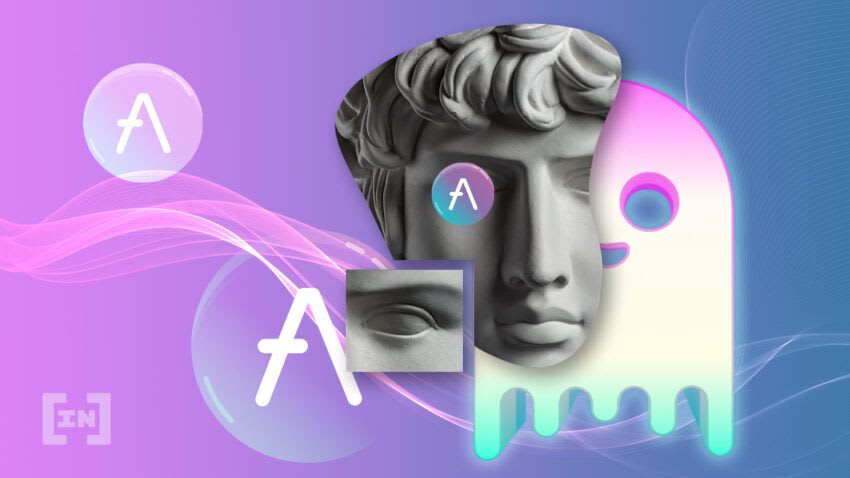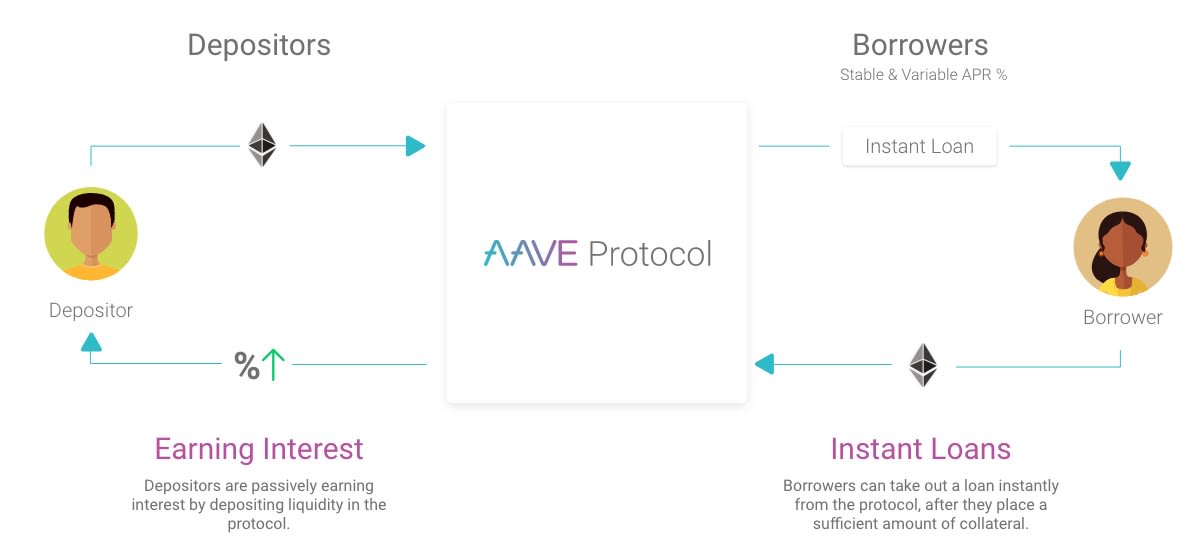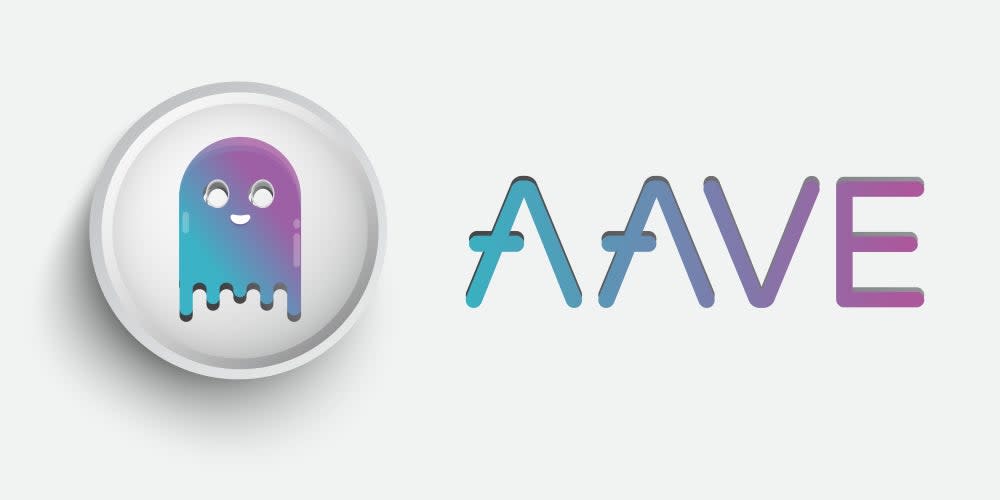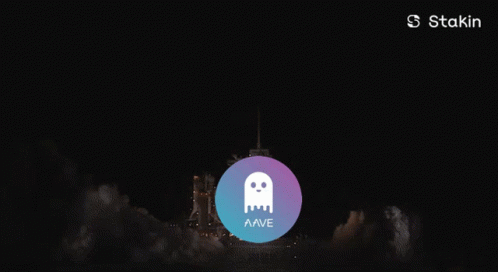Open Analytics - 19. Aave
uniswap
AAVE
What Is Aave? Inside the DeFi Lending Protocol DeFi protocol Aave is one of the largest lenders of cryptocurrency and its AAVE token has a larger market cap than rivals Maker or Compound. Here's how it works.
Aave is a decentralized lending protocol that lets users lend or borrow cryptocurrency without going to a centralized intermediary. Users deposit digital assets into "liquidity pools," which become funds that the protocol can lend out.
Aave was originally built atop the Ethereum network, with all the tokens on the network also using the Ethereum blockchain to process transactions; they are known as ERC20 tokens. Aave has since expanded to other chains, including Avalanche, Fantom, and Harmony.
How lending works on Aave Traditionally, to get a loan, you'd need to go to a bank or other financial institution with lots of liquid cash. The bank will ask for collateral—in the case of a car loan, that would be the car title itself—in exchange for the loan. You then pay the principal to the bank every month, plus interest.
DeFi is different. There is no bank. Instead, smart contracts (which are computer codes that automate transactions, such as selling if a token price reaches a certain threshold) do the heavy lifting. DeFi removes the middlemen from asset-trading, futures contracts, and savings accounts.
In practice, that means that you can get a loan—in cryptocurrency—from people instead of financial institutions. However, you still have to put up collateral. In a DeFi system that tries to be fiat-free, that means other cryptocurrency tokens. [https://decrypt.co/resources/what-is-aave-inside-the-defi-lending-protocol]
Lending and borrowing on Aave Aave completely changes the rule book on lending and borrowing. Lenders deposit funds to liquidity pools, creating what’s known as a liquidity market. Aave currently hosts markets for a number of crypto tokens including ETH, SNX and YFI, as well as stablecoins like DAI and USDC. Lenders send their tokens to a smart contract on the Ethereum blockchain, and in return, they receive aTokens — assets that can be redeemed for the deposited token plus interest. One example of an aToken is aDAI, which is also available for earning interest direct to your Monolith wallet. Borrowers can withdraw funds from the liquidity pools by providing collateral. This must exceed the amount that they borrow by a set ratio, otherwise they face the risk of liquidation. Borrowers also receive interest-bearing aTokens to represent the equivalent amount of the underlying asset.
In each market, borrowers pay a higher APR (annual percentage rate) than the APY (annual percentage yield) lenders receive. The rates are calculated by smart contracts according to the liquidity in the pool (i.e. supply), and demand for the asset.
Borrowers can also choose between two interest rates: stable or variable. While the variable rate is based on the usage of the pool, the stable rate is calculated from the average of the last 30 days.
If they become undercollateralised, borrowers face liquidation. In each pool, a loan-to-value ratio is set to determine how much the borrower can withdraw relative to their collateral. If the liquidation threshold is met, arbitrageurs have a chance to buy the asset at a discount rate and pay the borrower minus a liquidation penalty. They can then sell the asset on the open market and profit from the price difference.


Dashboard Introduction & Methodology: In this dashboard, we want to notice the changes of two platforms, AAVE and UniSwap, after the Ethereum Merge
In this dashboard using:
1.Withdraw and Deposit ETH amount
2.net ETH amount change
3.Daily Deposit and Withdraw amount
4.Daily Depositors and Withdrawers
The main table we are going to use for the analysis are ez_deposits and ez_
The total volume of Withdraw in AAVE is more compared to the current Deposit
In general, those who have made deposits are more than those who have done Withdraw On the 13th, 14th and 15th of September 2022, the number of Depositors and Withdrawers had suddenly increased greatly.
In terms of the number of Depositors and the number of Withdrawers, there was no change either after Marj or before Marj But in terms of daily volume after Marj, the volume of Deposit and Withdraw has increased considering that most days the deposit has been superior to Withdraw
What Is Uniswap? Uniswap is an automated ethereum-based crypto exchange with its own governance token, UNI. niswap is a leading decentralized crypto exchange that runs on the Ethereum blockchain. The vast majority of crypto trading takes place on centralized exchanges such as Coinbase and Binance. These platforms are governed by a single authority (the company that operates the exchange), require users to place funds under their control and use a traditional order book system to facilitate trading. Order book-based trading is where buy and sell orders are presented in a list along with the total amount placed in each order. The amount of open buy and sell orders for an asset is known as “market depth.” In order to make a successful trade using this system, a buy order has to be matched with a sell order on the opposite side of the order book for the same amount and price of an asset, and vice versa.



Conclusion
According to the graphs, it can be understood that the number of depositor and Withdrawer has not changed either before or after Merge, but the volume of deposite and Withdraw has increased greatly in both Project.
The total amount of Ethereum deposited is 3 thousand more than Withdraw The general trend of Depositors and Withdrawers shows that since the beginning of 2023 Uniswap has experienced different numbers. Also, the number of transactions shows that since the middle of February, the number of transactions has increased a lot compared to the last 8 months.
The daily volume of deposited and Withdraw has increased a lot after Marj, so that the high point before Merge was 782 thousand for Ethereum deposited and 795 thousand for EthereumWithdraw , but after Marj, the volume of deposit and Withdraw increased a lot and reached The peak of 2.527 million deposits and 2.515 Withdraw has been reached

